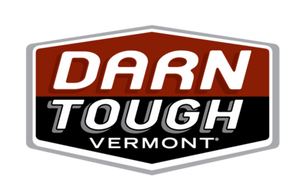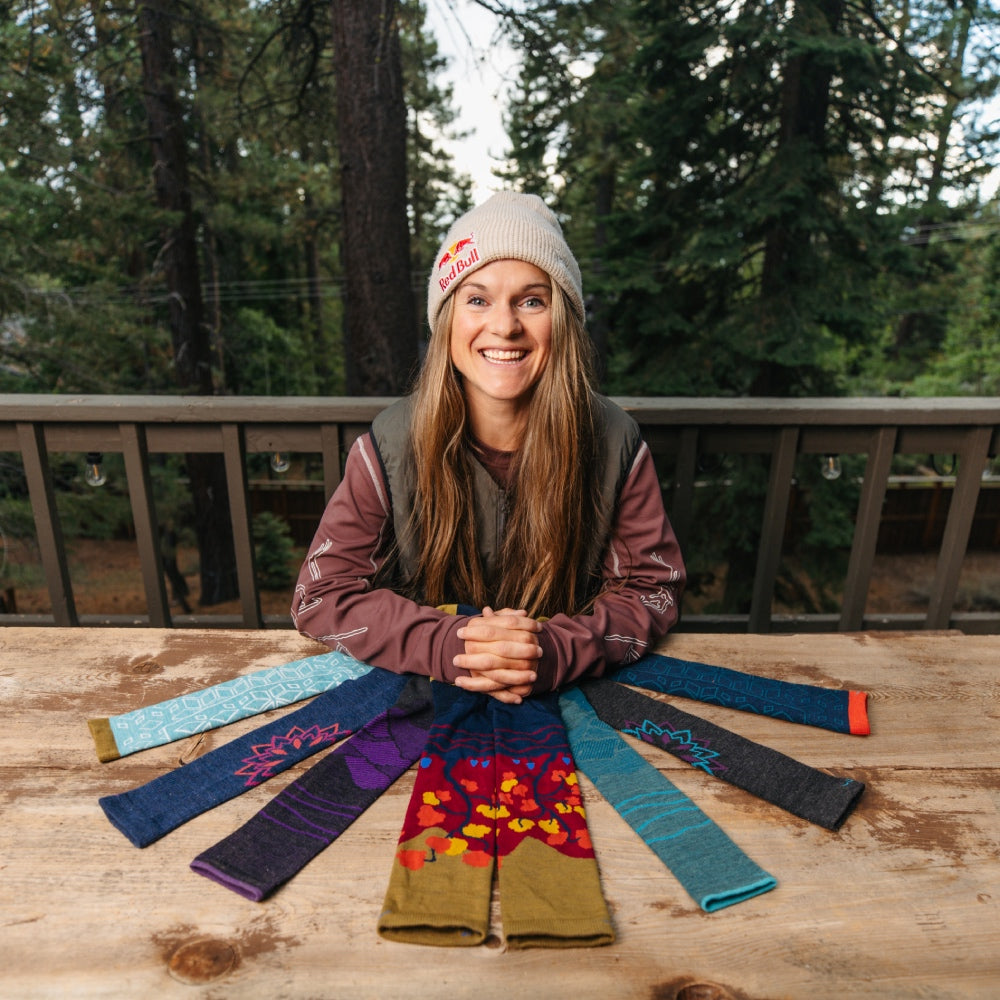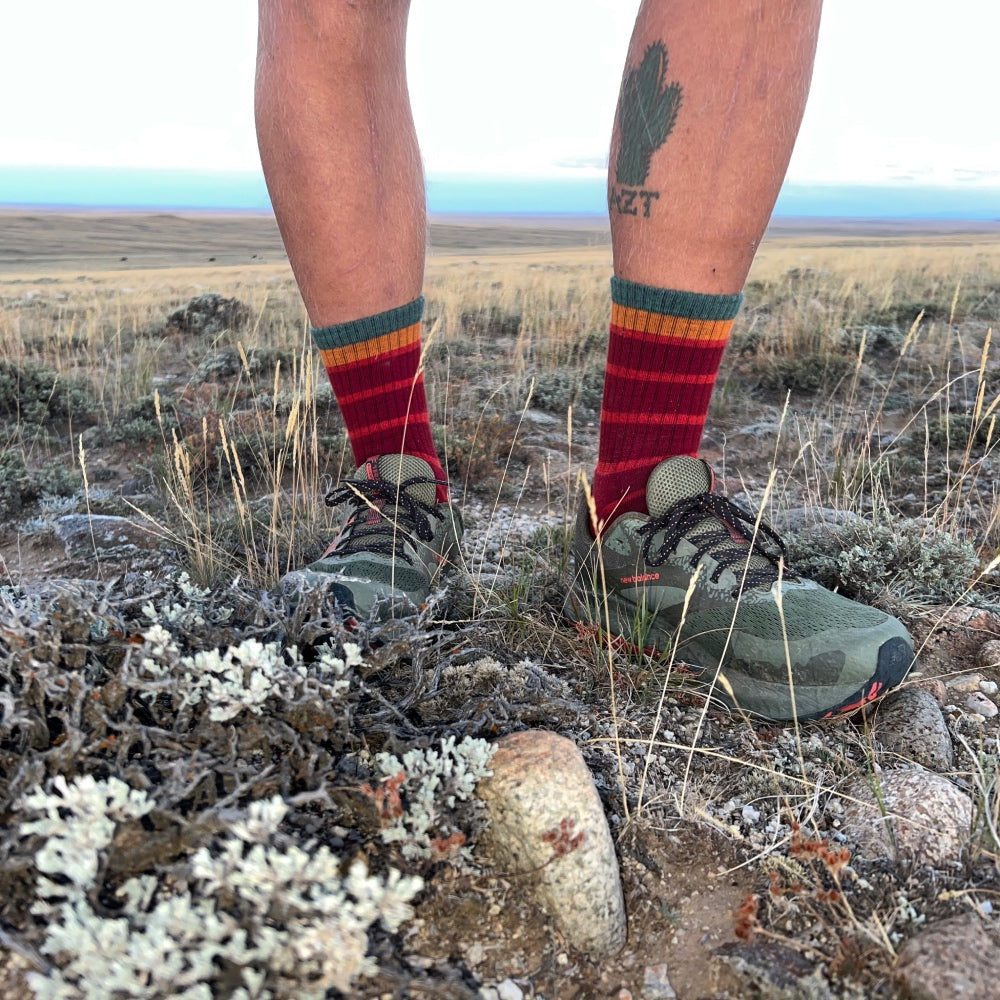Barn Quilts: Supporting the VT Foodbank, Art to Plate

The Knit to Give sock series is our way to continue supporting the Vermont Foodbank, our state’s biggest hunger-relief organization, with what we do best: make socks. All profits from each Knit to Give sock, beginning with the Barnyard, support the Foodbank’s work to provide nourishing food to neighbors in need through over 300+ community partners.
What better way to launch these socks, we figured, than by collaborating with local artists? With its farm-fresh look featuring a wheelbarrow, Holsteins, chickens, and more, the Barnyard sock in particular seemed like a perfect match for Vermont barn quilt artist Megan Beachum at Crow Bar D’signs, whose work you’ll see featured alongside our first Knit to Give sock on Darn Tough’s website and social media.
Cool, but What's a Barn Quilt?
Right. What are we talking about here? A quilt that covers an entire barn? Not quite. At her East Calais studio and home, Megan explains this eye-catching art form.

The first barn quilt Megan made is hanging on her horse stable. Set into a square wood frame, its colorful, geometric blocking fills each corner with triangular angles, evoking the namesake. Like most barn quilts, the design is based off a traditional quilting square, and painted in a large format for high visibility outside on the property. “That’s the bearpaw,” says Megan. “The significance to that is to tread carefully, but food and shelter are available here.”
Around the corner, hanging in front of her studio, is a “Farmer’s Star” pattern that was the inspiration for the piece she created to go with the first Knit to Give sock. Several versions, interpretations and extra patterns later, Megan says the final product is not really a Farmer’s Star anymore. And that no one makes the same version of that particular star pattern anyway— the beauty of the art form is that everyone brings a different story to it.

“That’s the cool thing about barn quilts, is that they usually have a meaning to them,” says Megan. “Because traditionally, they are based off quilt squares, something someone in your family would have done. It evokes memories, nostalgia, your grandmother, or days gone by.”
As for where it all began, Donna Sue Groves of Adams County Ohio is widely credited with starting things in 2001, when she set out to honor her late mother’s quilting art by painting in a quilt square style on wood and hanging it on a barn. The idea quickly caught traction, with neighbors and whole communities taking up brushes and boards, creating entire “quilt trails” that attract visitors from in state and out. If you’re here in Vermont and curious, we’ve got one going right in Franklin county.
Putting the Pieces Together
Megan’s studio is a study in organization, juxtaposed with the well-worn wooden handles of found and heirloom hand tools. Even her collection of antique hammers looks put together. Alongside framed pieces for sale, or already sold, are the novelty signs that she started out making before her foray into barn quilts. She used choice wood to frame her signs (and now her barn quilts), and in the process ended up with a lot of offcuts.

“I had all these leftover pieces, so I just started doing mosaics with them,” explains Megan, “because I’m a Vermonter, and I hate to throw anything away, especially cedar.”
Using her lone power tools — a chop-saw and nail gun — Megan began to learn how to cut and puzzle together those scraps into pieced woodwork. Inspired by her grandmother’s quilting, she started to design and paint in the style of quilting squares, and, in Megan’s words about her business, “It just blossomed into this.”

We know the feeling, at least when it comes to trying our best to turn our excess yarn into something productive and fun, like our Overstock Project.
And we’re pretty sure the Vermont Foodbank does too. They run the state’s largest gleaning program, organizing volunteers to harvest excess vegetables from farms around Vermont, ensuring those veggies don’t go to waste and that the Foodbank can offer folks in need healthy produce.
Inspired by the Farmer's Feeding Vermonters
Megan pulls out design after design from her stack of framed cut wood pieces. The colors and patterns evoke a cross over of west coast indigenous tribal symbols and the rustic Americana of quilting squares. Throughout her work, a love for the outdoors and the agricultural way of life comes forward, central themes to what many Vermonter’s value, and to providing the quality food we’re known for.
“Barn quilts are a nod to the rural landscape, and to farmers, those that feed us and provide us with food,” says Megan. “What would we do, what would we eat without them?”

The Vermont Foodbank’s Vermonters Feeding Vermonters program is helping make the farm to plate connection a possibility for everyone.
Before the growing season, the Foodbank agrees to purchase a set quantity of food from farmers, putting resources back into the local economy and adding stability that benefits the farmer. When its harvest time, Foodbank clients get access to fresh, nutritious food. And by keeping things local, the food last longer and has a lower environmental footprint.
Art and Socks to Help End Hunger
For those keeping tally, in this post, we’ve covered just two of the Foodbank’s amazing programs. The reality is that we need all of them. One in nine people face hunger in Vermont, a figure that hit record levels after the COVID-19 pandemic. We’re committing to showing up in support of their work with what we’ve got — socks.

Like Vermonters in general, Megan is also happy to help with what she does best.
“Barn quilts are personal expressions, but they are also public works of art, community art, civic art,” says Megan. “And art evokes emotion. Anything to get attention to where there is need, and hunger is a community need.”
So sit back in a rocking chair, pull on a pair of these socks and maybe cozy up to something cool like a barn quilt. There’s comfort in fresh yarn that gives its all to the Foodbank, and in art that’s part of the landscape — personal, rural or otherwise.







